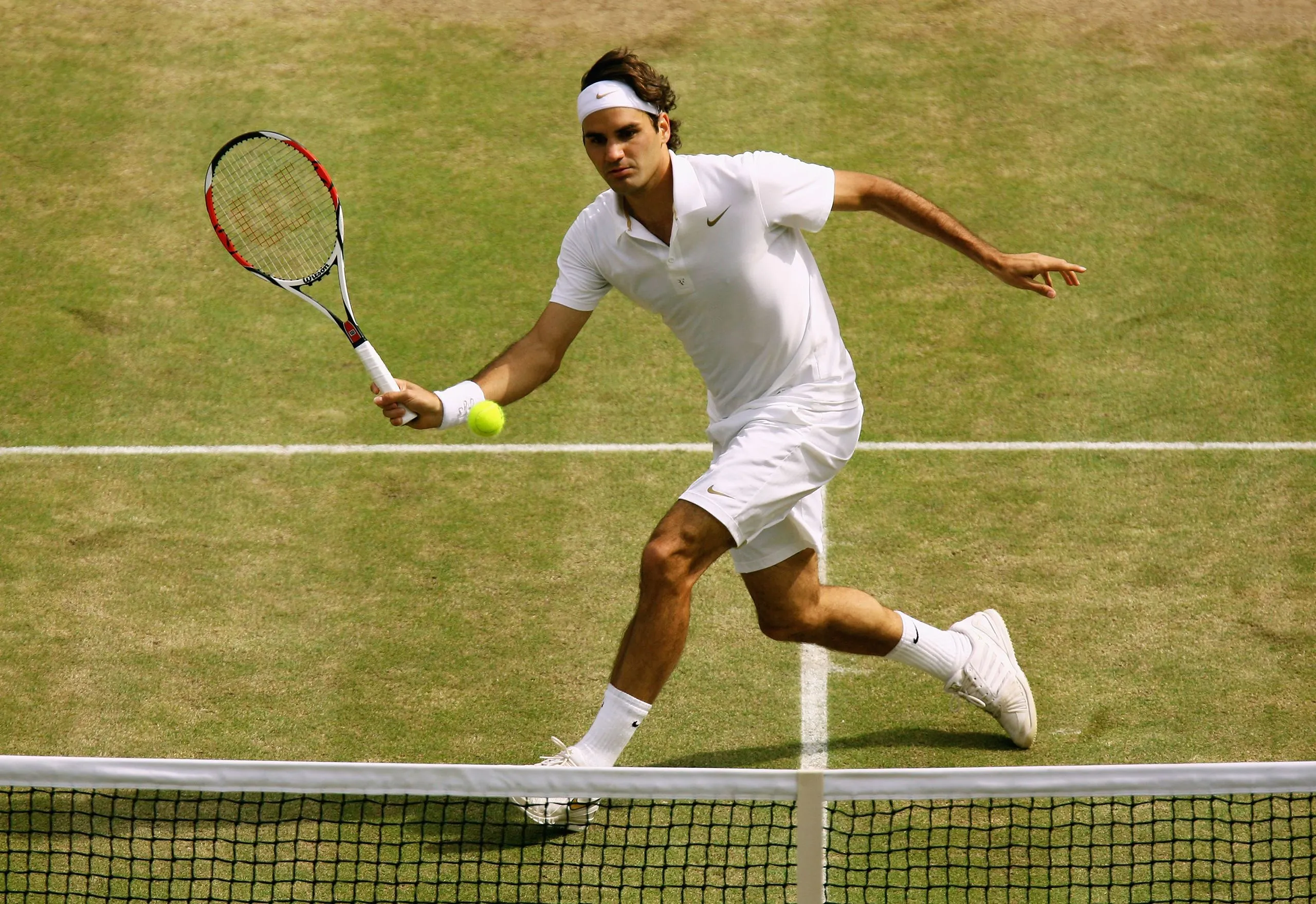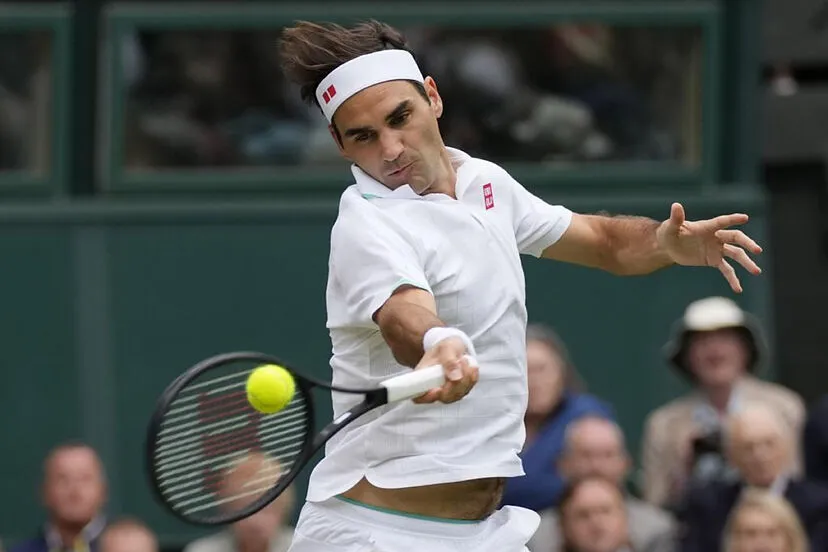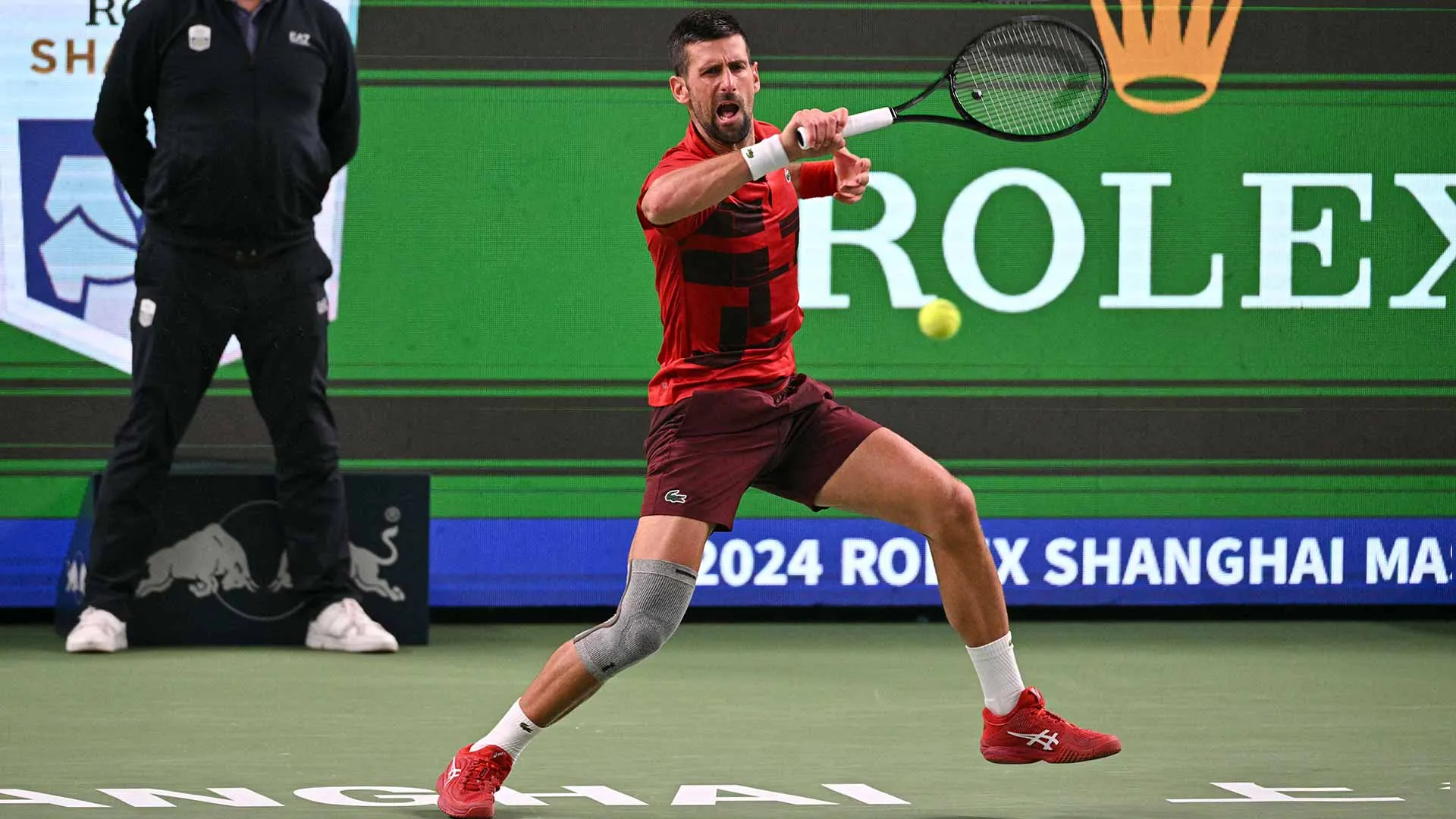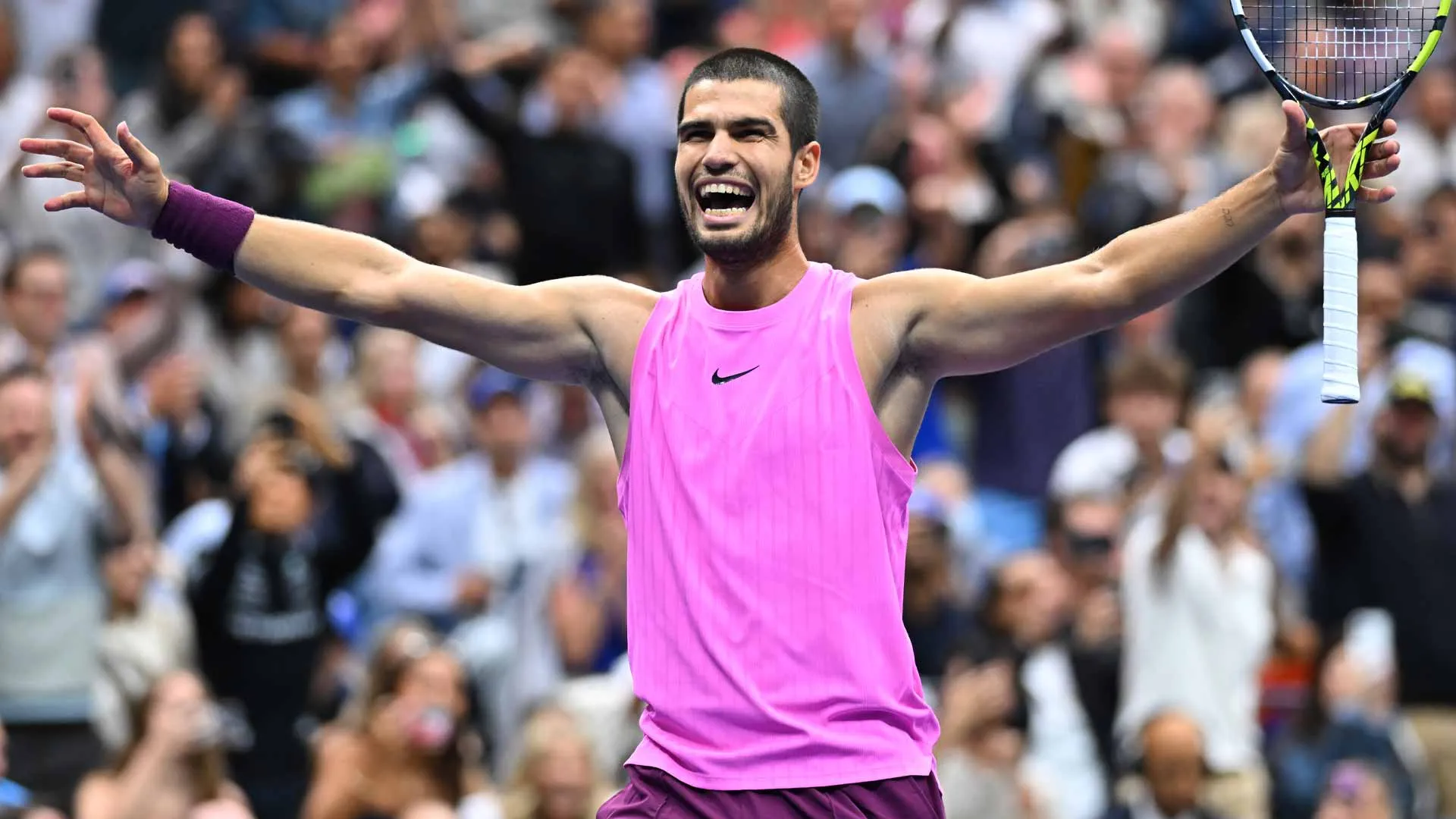

No One Saw This Coming: Federer Is One of Only Two People to Achieve the Unthinkable at a Grand Slam!
In the illustrious history of tennis, where legends are forged on the sacred grounds of Wimbledon, Roland Garros, Melbourne Park, and Flushing Meadows, there exists a feat so rare, so unthinkable, that only two individuals have ever managed to accomplish it. One of those remarkable figures is none other than Roger Federer, a name synonymous with grace, precision, and the golden era of men’s tennis.

From the early 2000s through the 2010s, Federer captivated the world with his effortless stroke play, poetic footwork, and mental toughness. But even as he amassed 20 Grand Slam titles, held the world No.1 ranking for a record 310 weeks, and inspired millions, there remained one achievement that was tucked away in the shadows of tennis history — one that he shared with only one other human being in the Open Era.
To understand the magnitude of what Federer has accomplished, we must delve into the grueling structure and history of Grand Slam tournaments, the high-stakes arena where dreams are made and shattered.
The Grand Slam: A Battlefield of the Tennis Gods
The Grand Slam tournaments — Australian Open, French Open, Wimbledon, and the US Open — are considered the most prestigious events in professional tennis. Each Slam is unique in surface, tradition, and conditions, posing distinct challenges. Winning even one Grand Slam title places a player in the upper echelons of the sport. But winning across all four — a Career Grand Slam — is something only a select few have done.
The psychological pressure, physical demands, and unpredictable elements (such as weather, injuries, or even crowd dynamics) make Grand Slam tournaments a test not just of skill but of resilience, adaptability, and spirit.
This brings us to the unthinkable feat: reaching the final of every Grand Slam at least five times. Yes, just two players in the history of the sport have managed this. And Roger Federer is one of them.
Why This Achievement Stuns the Tennis World
While fans are quick to celebrate the number of Grand Slam titles won, often overlooked is the equally astounding consistency required to reach the final stage of these majors repeatedly. Winning a title often depends on a variety of factors — form, opponent fatigue, draw luck — but reaching the final consistently? That requires sustained excellence over many years, across different surfaces, and against generations of competitors.
What makes Federer’s achievement so astonishing is not merely that he reached these finals — but how frequently and dominantly he did so. Let’s examine the depth of this performance:
-
At Wimbledon, Federer’s spiritual home, he reached 12 finals, winning eight.
-
At the US Open, he played in 7 finals, winning five consecutive titles from 2004 to 2008.
-
At the Australian Open, he reached 7 finals, lifting the trophy six times.
-
Even on his least favorite surface, clay, at Roland Garros, he managed 5 finals, winning in 2009 and often losing only to Rafael Nadal, the undisputed “King of Clay.”
This is the essence of greatness. Not just winning but constantly competing at the highest level, adapting your game for grass, hard, and clay courts, and still making it to the final weekend of each Grand Slam — again and again.
A Feat Shared by Only One Other: Novak Djokovic
To further emphasize the weight of Federer’s accomplishment, it’s important to note that the only other player to have reached five finals at each Grand Slam is Novak Djokovic. In a way, Federer and Djokovic stand as the twin peaks of the modern era, each redefining what it means to be an elite tennis player.
Djokovic, known for his defensive mastery, supreme fitness, and mental fortitude, has created his own dynasty. But even Djokovic, with his now-record 24 Grand Slam titles, only joined Federer in this elite club in recent years. It took him an extended run of dominance through his 30s to finally meet this particular milestone.
That Federer had already achieved it well before the tail end of his career makes his accomplishment even more profound. He was not only first to do it, but he also did so with an elegance and joy that enthralled the world.
The Surface Conundrum: Adapting Across All Terrains
One of the reasons this feat remains so rare is the sheer difficulty of mastering all three primary surfaces used in tennis:
-
Grass (Wimbledon) demands quick reflexes, low bounces, and precision.
-
Clay (Roland Garros) requires stamina, topspin, and patience.
-
Hard courts (US Open & Australian Open) call for a balance of speed, power, and agility.
Historically, players often specialize. For example, clay-court specialists rarely do well at Wimbledon, and vice versa. To reach five finals in each of these environments is to be the ultimate all-court player.
Federer’s success on grass and hard courts is well-documented, but his clay-court credentials are sometimes underappreciated. The fact that he reached five French Open finals during the prime of Nadal’s clay dominance is an achievement unto itself. In many of those matches, Federer played well enough to beat anyone — anyone but Nadal, who was virtually invincible on the red dirt.
Mental Toughness and Longevity: Federer’s Real Legacy
Consistency at this level is not merely a product of skill; it is a testament to mental toughness, injury management, and dedication. Tennis is a lonely sport — no teammates to rely on, no substitutions, no timeouts. You’re out there alone for hours, fighting not just an opponent but your own doubts, fatigue, and the weight of expectation.
Federer, throughout his career, faced a barrage of elite challengers — from Andy Roddick, Lleyton Hewitt, and Marat Safin in the early days, to Nadal, Djokovic, and Andy Murray in the Big Four era, and later Daniil Medvedev, Dominic Thiem, and others in the next generation. Through all these phases, he remained relevant, competitive, and — often — dominant.
His ability to reinvent his game, adjusting strategies, refining technique, and embracing a more aggressive return approach in later years, illustrates a deep understanding of the game’s evolution. It’s this tennis IQ, coupled with unmatched footwork and an effortless serve, that allowed him to remain at the top for over two decades.
Beyond Numbers: The Federer Effect
While this statistical milestone places Federer in an elite numerical category, his impact transcends statistics. Federer brought a poetic quality to tennis. For many fans, watching him was not about the scoreboard — it was about the artistry. His one-handed backhand, his half-volleys, his movement — it all felt like a symphony on the court.
His sportsmanship, grace in defeat, and humility in victory endeared him to fans around the globe. Even as younger players rose to prominence, Federer remained a fan favorite, filling stadiums, boosting ticket sales, and elevating the sport’s global appeal.
The fact that someone with such aesthetics and emotion in his game also holds such gritty, rare records speaks volumes. He was not just a beautiful player — he was a fierce competitor, a warrior cloaked in elegance.
A Record That May Never Be Equaled Again
As tennis moves into a new era, with Federer retired and Nadal also winding down, questions arise: Will any future player match the consistency, versatility, and longevity needed to reach five finals at every Slam?

It’s possible, but unlikely. Today’s physical demands, coupled with a faster-paced tour and rising levels of competition, make this record one of the most challenging to replicate. Even dominant players like Carlos Alcaraz or Jannik Sinner, with all their promise, would need a decade of supreme consistency to even come close.
Federer’s record stands not just as a number, but as a monument to excellence, built brick by brick, final by final, across all surfaces, against all odds.
The Immortal Two: Federer and Djokovic
For all their contrasts — Federer’s elegance vs. Djokovic’s grit, Federer’s fluidity vs. Djokovic’s intensity — both men have carved out this unique space in tennis history. They are the only two players to have ever reached five finals at every Grand Slam.
But Federer did it first. And for many, he did it in the most memorable fashion.
In the end, it’s not just about who won more. It’s about who inspired more, who redefined what was possible, and who made you fall in love with the game.
Conclusion: Federer’s Place in Tennis Immortality
The unthinkable has been achieved — Roger Federer, the Swiss Maestro, stands among the only two players in history to have reached at least five finals at all four Grand Slam tournaments. In doing so, he has not only set a standard of excellence but also redefined what it means to be a complete player, a consummate champion, and a global icon.
This achievement may be buried in the fine print for casual fans, but for those who truly understand the sport — it is one of the clearest proofs of Federer’s unparalleled greatness.
Indeed, no one saw this coming. But then again, Roger Federer has always been about doing the unimaginable — and making it look easy.


















